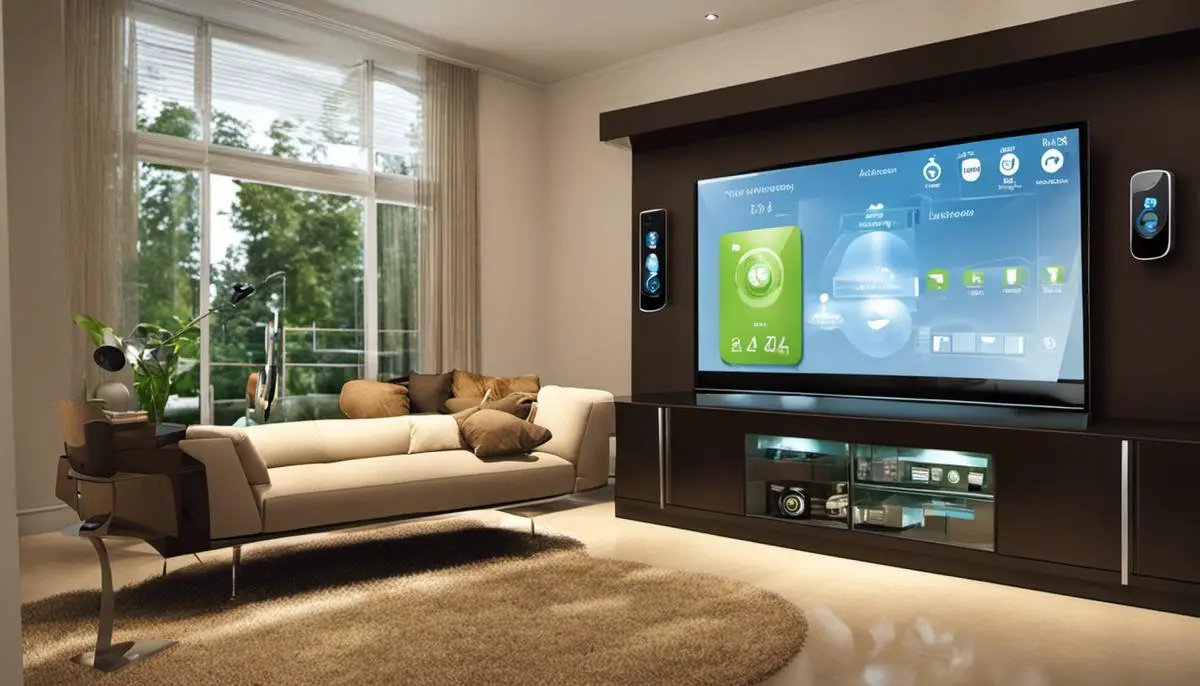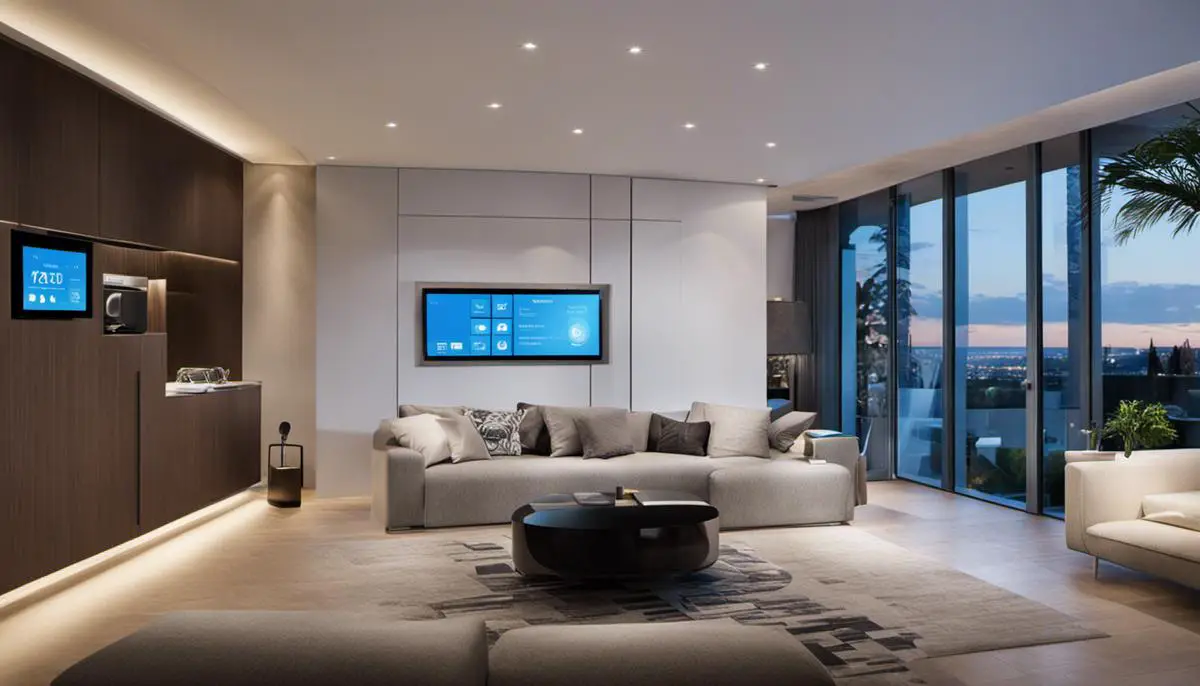Welcome to the thrilling world of Smart Home Automation! This immersive journey analyzes the intricate facets of ‘smart’ devices and offers a historical perspective on home automation, laying down a foundation for comprehension.
As we delve deeper, we peel away the outer layers of the many intelligent devices adorning the market, scrutinizing their compatibility, features, ease of use, and more. With this knowledge, you can identify the perfect gadgets for your unique needs and lifestyle. Once you’ve made your selections, the journey does not end there; instead, we transition to the equally significant stage of installation and configuration—guiding you through each step, from unboxing to the first power-up.
Lastly, your long-term relationship with your smart home depends on regular maintenance and effective troubleshooting. Hence, we provide a handy guide to tackle common issues and promote the smooth operation of your smart network.
Understanding the Basics of Smart Home Automation
Welcome, fellow hobbyist! Here, we live and breathe home automation, a thrilling venture that synergizes bits and bytes with bricks and mortar. Familiarizing ourselves with the foundational knowledge is the practical route to start this journey. After all, we should learn to crawl before we run, right? So, let’s dive straight into this incredible world of home automation.
First up, Understanding Home Automation. At its core, home automation is about making life easier, more comfortable, and efficient. How, you ask? By allowing everyday home devices to communicate, control each other, and make decisions based on homeowners’ preferences. Everything from lighting, heating, and security systems can be programmed to work autonomously or at the touch of a button.
Taking that first step into home automation involves a hearty understanding of some basic Tech Jargon. Words like “Zigbee,” “Z-Wave,” and “IFTTT” can quickly become part of everyday conversation. You’ll learn that Zigbee and Z-Wave are wireless protocols that ensure your devices communicate effectively, while IFTTT (If This Then That) is a service that allows your devices to perform an action based on specific conditions. Familiarity with these terms is an integral part of this knowledge pilgrimage.
Then, choosing the Right Platforms and Devices. Each home automation setup is as unique as its user, so no universal rule fits all. However, selecting open platforms and versatile devices that can grow with your changing needs is crucial. Popular choices include Amazon’s Alexa, Google Home, and Apple’s Homekit. They can control various devices ranging from smart lights to door locks, heaters, and the like.
Enter the captivating world of sensors and controllers. In the home automation milieu, sensors are the eyes and ears, detecting environmental changes, such as motion, light, or temperature. On the other hand, controllers are the hands on the steering wheel, issuing commands based on programmed rules or direct input. Both these elements complement and are essential in a well-rounded home automation understanding.
To make your home automation dream come true, learning Basic Programming is advantageous. While some may argue this isn’t necessary, it’s useful in creating customized automation rules and integrating devices that don’t naturally want to play nicely together.
Diving into the final foundational piece of the puzzle. A reliable network ensures your devices communicate seamlessly within your smart home ecosystem. Familiarize yourself with basic networking terms like IP addresses, subnets, and firewalls to optimize performance and secure your smart home devices.
Embrace the journey as much as the destination, new hobbyist. Remember, mistakes are not repeat errors, and every mishap is a learning opportunity. So, let your imagination and creativity take flight, welcoming the sophistication and convenience of a world where the future is now. Home automation is a thrilling adventure, so join us as we automate our world, one device at a time.

Choosing the Right Smart Home Automation Devices
Customizing Smart Home Devices: A Tailored Approach
Exploring the vast world of smart home devices can be as captivating as it is detail-oriented – the joy is in matching each selection to a specific need, personalizing to the slightest detail. And in this era of technology, the options are abundant. The combination of convenience, control, energy efficiency, and security makes smart homes an exciting hobby for anyone who loves tech and comfort. The key is to prioritize based on personal needs, understand the unique space, and not to forget, enjoy the process!
One important aspect to consider is the integration of various smart home devices. Seemingly separately, these devices can perform specific tasks. However, they create a true “smart home” experience when they communicate and coordinate in harmony. Therefore, when selecting smart home devices, their compatibility with one another is crucial. An effortlessly synchronized system is what we are after.
The hub of the smart home is often the controller, whether in the form of a remote control, a smartphone app, or even a voice assistant. Some individuals might love a hands-on approach with a tangible controller, while others may be fascinated by voice-controlled systems and give orders to an Alexa or a Google Home device with a simple command. Choosing this piece of the puzzle can significantly influence what other devices are picked.
With lighting, smart bulbs can be controlled remotely and customized according to personal preferences. However, device selection can go beyond just brightness and color. Factors such as compatibility with different fixtures, energy efficiency, lifespan, and whether the bulbs can operate without a hub can also influence the selection process.
Sound technology is another segment where options are marvelous! Soundbars, smart speakers, and multi-room audio systems all offer unique benefits. Before purchasing, consider the room size and the primary usage – music, home cinema, or voice commands. Even the aesthetic appeal and build quality can affect the decision.
There are cameras, smart locks, alarm systems, and doorbell cameras for security purposes. Depending on the scope of security needs and whether indoor or outdoor surveillance is necessary, there are various devices to match any requirement.
And, of course, heating and cooling devices greatly contribute to a smart home’s longevity and optimal functioning. Thermostats can learn routines, sensors can detect occupancy, and systems can be remotely controlled.
While it may initially seem overwhelming, diving into the smart home hobby is quite a ride! Selection is about finding the right balance between utility, convenience, affordability, and pleasure. The aim is to create your space uniquely, using technology to enhance and automate every facet of the home. Happy smart home building!

Installing and Configuring Your Smart Home Devices
The journey of transforming your humble abode into a tech-powered haven brimming with automation can be exhilarating. It’s an opportunity to merge utility with convenience using various smart machines while making it a reflection of your persona. However, achieving the desired harmony between smart devices requires a methodical approach, technical know-how, and genuine enthusiasm!

Maintaining and Troubleshooting Smart Home Devices
Now that we have covered some of the components of a smart home, it’s time to dive into how to keep those systems operating smoothly. After all, home automation is about making life easier, not fumbling around in the dark because of a glitch in the system!
First and foremost, regular maintenance plays a vital role. Think of your home automation system like a car; while it might run for a while with no attention, over time, minor issues can evolve into significant problems if not appropriately addressed. Regular inspections of your home automation hardware – checking for loose wires, testing battery life, and dusting equipment – can preemptively catch potential issues. Software updates, a feature most smart devices offer, should also be performed regularly.
Another measure to consider is professional servicing, especially when dealing with major systems like heating and cooling, security, and lighting. Manufacturers often provide annual maintenance contracts, including regular visits from technicians who ensure everything is in prime condition.
As for troubleshooting common problems, it’s often a case of knowing your system well. The more proficient you become in the workings of your home automation system, the more likely you can identify and solve simple issues without needing professional help. Having a solid grasp of tech jargon, understanding how each of your devices functions (individually and in relation to each other), and being comfortable with the platforms you’ve chosen for your automation needs are all crucial.
In addition, keeping up-to-date with recent developments in smart technology can be highly beneficial. Regularly reading industry publications, joining home automation forums, and subscribing to relevant YouTube channels can provide valuable information and expose you to a community of like-minded individuals who can offer advice and insights.
Moreover, wireless connectivity issues can often be solved with basic network configuration knowledge. Some common solutions to connectivity problems include restarting the problematic device, moving your router, or adjusting your router’s channel settings.
Lastly, always remember the ultimate goal: creating a personalized, convenient and enjoyable space in your home. If a component of your home automation system is causing more frustration than it’s worth, reevaluate its necessity or consider alternative solutions. Your ideal smart home should function almost effortlessly, keeping the tech fuss bare minimum while maximizing utility and enjoyment.
In essence, maintaining a home automation system in top condition involves regular physical and digital maintenance, understanding your system well, staying updated on new developments, quickly identifying and troubleshooting issues, and always keeping in mind the reason why you adopted this hobby in the first place: personalization, convenience, and fun. Now, venture forth, smart home enthusiasts, and keep those systems running smoothly!
Conclusion
You have ventured from the foundational concepts of Smart Home Automation straight through to maintenance and troubleshooting. The importance of picking devices compatible with your needs and preferences, the practical aspects of installing and configuring them, and the necessity of sustained maintenance and effective troubleshooting cannot be overstated.
The world of smart home automation is diverse and constantly evolving, offering limitless possibilities and opportunities. However, with this comprehensive guide, you can navigate through this exciting tech domain, making informed decisions, setting up seamless smart networks, and resolving issues like a pro. The power to create an efficient, personalized, and automated living environment is now in your hands. Enjoy the journey!
